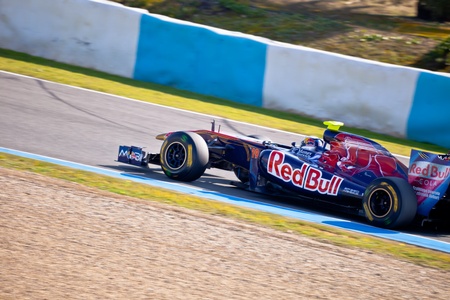1. Introduction to Electric Racing
Electric racing is rapidly gaining momentum in the motorsports world. Once considered a niche concept, it has now become a major force, attracting fans, manufacturers, and racing professionals. With a focus on innovation and sustainability, electric racing series like Formula E are transforming the way people think about high-speed competition.
What is Electric Racing?
Electric racing is a form of motorsport that uses fully electric vehicles instead of traditional internal combustion engine cars. These races emphasize clean energy, cutting-edge technology, and efficiency while delivering thrilling high-speed action.
Why is Electric Racing Growing?
Several factors contribute to the growing popularity of electric racing, including environmental concerns, technological advancements, and increasing support from major automakers.
Key Factors Driving Growth
| Factor | Explanation |
|---|---|
| Environmental Awareness | More fans and corporations are supporting sustainable sports, making electric racing a top choice. |
| Technological Innovations | Advances in battery and motor technology make electric race cars faster and more efficient. |
| Automaker Involvement | Companies like Porsche, Mercedes, and Nissan are investing heavily in electric racing. |
| Fan Engagement | Interactive fan experiences, like online voting to boost a drivers power, enhance audience involvement. |
The Role of Formula E
Formula E is the leading electric racing series, featuring high-performance electric cars competing on street circuits worldwide. It has grown significantly since its debut in 2014, becoming a platform for testing and showcasing cutting-edge automotive technologies.
2. The Evolution of Formula E
Since its debut in 2014, Formula E has rapidly evolved, pushing the boundaries of electric racing technology and competition. What began as an ambitious idea has transformed into a globally recognized motorsport, attracting top manufacturers, drivers, and fans from around the world.
Technological Advancements
In the early seasons, Formula E cars had limited range, requiring drivers to switch vehicles mid-race. However, with continuous advancements, the championship introduced the Gen2 car in 2018, eliminating car swaps and significantly improving power and battery life. Now, the Gen3 era has taken things even further.
Formula E Car Evolution
| Generation | Years Used | Max Power | Battery Capacity | Top Speed |
|---|---|---|---|---|
| Gen1 | 2014-2018 | 200 kW | 28 kWh | 140 mph (225 km/h) |
| Gen2 | 2018-2022 | 250 kW | 52 kWh | 174 mph (280 km/h) |
| Gen3 | 2023-Present | 350 kW | 70 kWh | 200 mph (322 km/h) |
Increased Competition & Manufacturer Support
Over the years, Formula E has attracted prestigious automotive brands such as Porsche, Jaguar, Nissan, and Maserati. These manufacturers contribute their expertise in electric vehicle technology, making the competition more intense and further pushing innovation.
Exciting Rule Changes
To keep races engaging, Formula E has introduced unique rule changes such as Attack Mode, which gives drivers a temporary power boost, and Energy Management Strategies, where teams must carefully balance speed and battery usage to reach the finish line.
Urban Racing Circuits
Unlike traditional motorsports, Formula E features races in the heart of major cities like New York, London, and Rome. These urban circuits make the sport more accessible and highlight the benefits of sustainable electric mobility.

3. Three: High-Tech Innovations in Electric Racing
Electric racing has gained popularity thanks to its cutting-edge technology. From advanced battery systems to regenerative braking and aerodynamics, these innovations make racing faster, more efficient, and more thrilling. Let’s dive into the key technologies driving this revolution.
Battery Systems: The Heart of Electric Racing
The battery is the most crucial component of an electric race car. In Formula E, teams use state-of-the-art lithium-ion battery packs that provide an optimal balance between power and efficiency. These batteries store enough energy to sustain high-speed racing for an entire event while maintaining reliability.
Key Features of Racing Batteries
| Feature | Description |
|---|---|
| Energy Capacity | Formula E cars use 54 kWh batteries, allowing them to complete a full race without swapping cars. |
| Charge Time | Fast-charging technology allows partial recharges during pit stops in experimental racing formats. |
| Cooling System | Advanced cooling mechanisms prevent overheating, ensuring optimal performance. |
Regenerative Braking: Recovering Lost Energy
Regenerative braking is a key technology in electric racing that enhances efficiency. Instead of losing energy as heat when braking, the system converts it back into electricity, storing it in the battery for later use.
How Regenerative Braking Works
When a driver brakes, the electric motor reverses its function, acting as a generator. This process slows the car down while simultaneously recharging the battery. Formula E cars can recover up to 40% of their total energy through this system, significantly extending performance without extra fuel or power consumption.
Aerodynamics: Maximizing Speed and Efficiency
Aerodynamics play a crucial role in electric racing. Engineers design race cars with sleek shapes and lightweight materials to reduce drag and maximize speed.
Key Aerodynamic Enhancements
- Active Rear Wings: Adjustable wings help maintain optimal downforce in different racing conditions.
- Venturi Tunnels: Specially designed tunnels under the car enhance airflow, reducing turbulence and increasing efficiency.
- Lightweight Carbon Fiber Frames: These materials provide the best combination of strength and minimal weight, improving performance.
Conclusion
The combination of advanced battery systems, regenerative braking, and aerodynamic innovations has revolutionized electric racing. These technological breakthroughs not only improve performance but also pave the way for the future of sustainable motorsports.
4. Other Electric Racing Events
While Formula E has been leading the charge in electric motorsports, other high-tech racing series are also making waves. From off-road electric racing to high-speed electric motorcycles, these competitions highlight the innovation and excitement that electric power brings to motorsports.
Extreme E: Off-Road Electric Action
Extreme E is a unique electric racing series that takes high-performance off-road SUVs to the harshest environments on Earth. Designed to raise awareness of climate change, this series races in remote locations like deserts, the Arctic, and rainforests.
Key Features of Extreme E
| Feature | Description |
|---|---|
| Electric SUVs | All teams use the same electric SUV, the ODYSSEY 21, built for extreme conditions. |
| Environmental Focus | Events highlight climate change issues and use sustainable logistics. |
| Gender Equality | Each team includes one male and one female driver, ensuring equal participation. |
Electric Motorcycle Racing: MotoE
Two-wheel racing has also embraced electric power through the FIM MotoE World Championship. As a support series to MotoGP, MotoE showcases high-speed electric motorcycles built for competitive racing.
Why MotoE Stands Out
- High-Performance Bikes: All riders use electric motorcycles from Energica, capable of reaching speeds over 160 mph.
- Short, Intense Races: MotoE races are typically shorter than traditional MotoGP races, making them action-packed.
- Instant Torque: Electric motors deliver immediate acceleration, creating exciting head-to-head battles.
Other Notable Electric Racing Series
Beyond Formula E, Extreme E, and MotoE, other electric racing competitions are emerging worldwide. Here are a few to watch:
Expanding Electric Motorsports
| Series | Type | Key Highlights |
|---|---|---|
| eTouring Car World Cup | Electric Touring Cars | A global championship featuring high-speed electric sedan racing. |
| Electric GT | Electric GT Cars | Features modified Tesla Model S and other high-performance EVs. |
| eSkootr Championship (eSC) | Electric Scooter Racing | A unique, high-speed electric scooter series focused on urban mobility. |
As electric racing continues to evolve, new series and innovations will keep pushing the limits of what’s possible in motorsports. With cutting-edge technology and sustainability in mind, these events are shaping the future of racing.
5. Five, The Future of Electric Motorsports
Electric racing is on the rise, and its future looks brighter than ever. With a growing emphasis on sustainability, new ways to engage fans, and potential expansions across the industry, we’re witnessing an exciting shift in motorsports. Let’s take a look at what lies ahead for electric racing.
Sustainability and Innovation
One of the most crucial aspects of electric motorsports is its role in promoting environmental sustainability. Unlike traditional racing, which relies on fossil fuels, electric series like Formula E reduce carbon emissions and encourage the development of clean-energy technologies. In the future, we can expect continued innovations in battery efficiency, charging infrastructure, and the use of sustainable materials for car manufacturing.
Sustainable Advancements in Electric Racing
| Area of Innovation | Future Developments |
|---|---|
| Battery Technology | Faster charging times, longer battery life, and increased energy density |
| Eco-Friendly Materials | Use of biodegradable, recycled, and sustainable materials in car construction |
| Renewable Energy | More teams relying on solar, wind, and other green energy sources |
Fan Engagement and Immersive Experiences
As technology advances, so does the way fans interact with electric motorsports. Formula E has already introduced groundbreaking features like FanBoost, allowing fans to vote and give their favorite drivers an in-race power boost. Moving forward, we can expect even more interactive experiences through augmented reality (AR), virtual reality (VR), and real-time data streaming, allowing fans to feel even closer to the action.
Ways Fans Will Engage with Electric Racing
- Live streaming with real-time performance data
- Virtual reality experiences for an on-track perspective
- Augmented reality overlays for enhanced viewing
- Expanded social media interactions and fan-driven decisions
Expansion of Electric Racing Series
With the success of Formula E, more electric racing series are being explored. Extreme E has brought electric racing to off-road environments, while electric touring car series are also gaining popularity. The potential for electric racing to expand into endurance events, rally racing, and even electric motorcycle championships could shape the future of the industry.
Potential Areas for Growth
- Electric endurance racing with longer-lasting batteries
- Expansion of Extreme E to diverse terrains and locations
- Electric-powered touring car championships
- Growth of electric superbike racing on global circuits
Electric motorsports are set for an exciting future, driven by sustainability, innovation, and growing fan involvement. As the industry evolves, we’ll see more cutting-edge technology, immersive fan experiences, and an ever-expanding range of competitions pushing the limits of electric racing.


